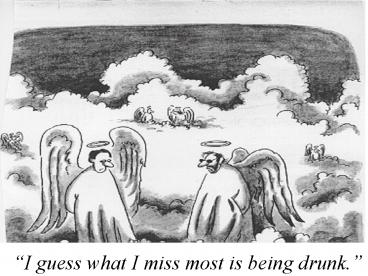Depression in Youth - PowerPoint PPT Presentation
1 / 30
Title:
Depression in Youth
Description:
Sudden, rapid, recurrent non-rhythmic, stereotyped, motor movement or vocalization ... Depressed or irritable mood lasting a year or ... Selective Mutism ... – PowerPoint PPT presentation
Number of Views:92
Avg rating:3.0/5.0
Title: Depression in Youth
1
I guess what I miss most is being drunk.
2
SUD Assessment
- Parental values
- Genetics
- Culture
- Individual characteristics
- Peer group
3
Suicide
- Epidemiology
- Impulse control risk factors
- Biopsychosocial etiology
- Gender differences
4
Tic Disorders
- Sudden, rapid, recurrent non-rhythmic,
stereotyped, motor movement or vocalization - Tourettes Disorder
- motor before vocal
- autosomal dominant
5
Eating Disorders
- Anorexia Nervosa
- Bulimia Nervosa
- Pica
6
Symptoms of Depression in Young People
- Irritability
- Denial of depression
- Low self-esteem
- Somatic Complaints
- Depressed appearance
7
Diagnosis of Dysthymia
- Depressed or irritable mood lasting a year or
longer - Never symptom free for longer than 2 months
8
Diagnosis of Dysthymia(Contd.)
- Symptoms
- pessimism
- social withdrawal
- decreased energy
- low self-esteem
- poor concentration
- hopelessness
- sleep and appetite changes
9
Risk Factors for MDD and Dysthymia
- Stressful life events
- Parental dysfunction and loss
- Boys - neonatal health problems
- Girls - perceived unpopularity,
- anxiety
10
Early Onset Bipolar Disorder
- Changes in mood, sleep pattern and energy
- Hyperactivity and irritability
- Distractibility
- Pressured speech
11
Early Onset Bipolar Disorder (Contd.)
- Affective symptomatology
- Visual hallucinations
- Unreasonable irritability and anger
12
Epidemiology of Depression
- Incidence increasing
- 4.7 MDD among adolescents
- Mean age of onset 11 years
- 0.7 bipolar among adolescents
13
Son, its important to remember that its O.K. to
be depressed.
14
Depression Biologic Etiology
- Genetic influences
- Structural and functional changes
- Serotonin and norepinepherine
- Cortisol and growth hormone
- Attachment experience
15
Depression Psychosocial Etiology
- Developmental dynamics
- Life stress
- Family dysfunction
- Cultural support
16
Depression DDX and Co-mobidity
- Bipolar Disorder
- ADHD
- Anxiety and PTSD
- Medical causes
17
Separation Anxiety Disorder
- Excessive anxiety about separation from the home
or from significant others
- Differential Diagnosis
- Phobia LD
- Conduct Disorder Depression
18
Selective Mutism
- Failure to speak in specific social situations
despite speaking in other situations.
19
Reactive Attachment Disorder of Infancy or Early
Childhood
- Developmentally inappropriate social relatedness
beginning before age 5 associated with
pathological care. - Inhibited and Disinhibited Type
20
Generalized Anxiety Disorder
- Excessive anxiety and worry for at least 6 months
- Worry about performance at school and sports
- DSM IV criteria less stringent
21
Phobias
- Most common disorder in childhood
- Fears and anxieties decrease with age. About 2 -
3 of adolescents have significant fears.
22
Phobias (Contd.)
- Fear of loud noises, the dark, animals, or
imaginary creatures are common in younger
children. In older children, fears are more
focused on health, social and school problems.
23
Obsessive-Compulsive Disorder
- High incidence in Tourettes
- Age of onset younger in males
- Basal ganglia disorders (PANDAS)
24
PTSD
- Fear of separation, withdrawal, reenactment,
sleep disturbance, regression, impulsivity - Anxiety, psychosis
- Physical symptoms, nightmares
25
Response to Traumatic Events
- The effect of trauma depends on the mediating
processes - developmental level
- biology of the trauma experience
- social context
- coping skills, protective factors, resilience
26
Childhood Trauma
- Type I
- full detailed memories
- omens and misperceptions
- Type II
- denial and numbing
- self-hypnosis, dissociation, rage
27
Dissociativeexperiences bothduring the
traumaand afterward is relatedto the later
developmentof PTSD
28
Biologic Response to Stress
- Genetics
- Fight or flight
- Norepinepherine linked to immediate and prolonged
response - Serotonin linked to anxiety and panic in PTSD
29
Biologic Response to Stress(Contd.)
- Brain regions involved include locus coeruleus,
ventral tegmental region, and amygdala - Increase glucocorticoid release results in loss
of neurons and decreased dendritic branching in
hippocampus and cognitive dysfunction.
30
The Child Interview (Pynoos)
- Stage I
- focus and traumatic reference
- Stage 2
- relive experience
- coping themes
- closure, recapitulation, courage/strengths
31
Associated Problems
- Co-morbid psychiatric disorders
- Substance abuse
- Sexual/intimacy problems































